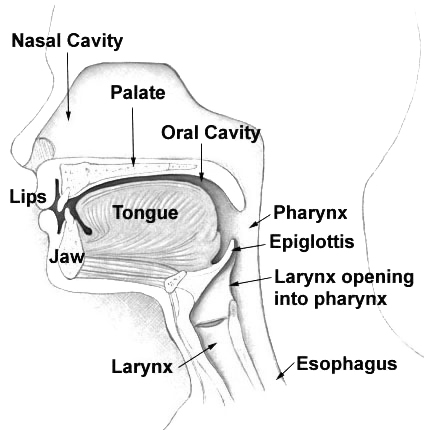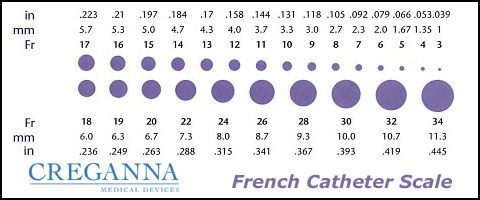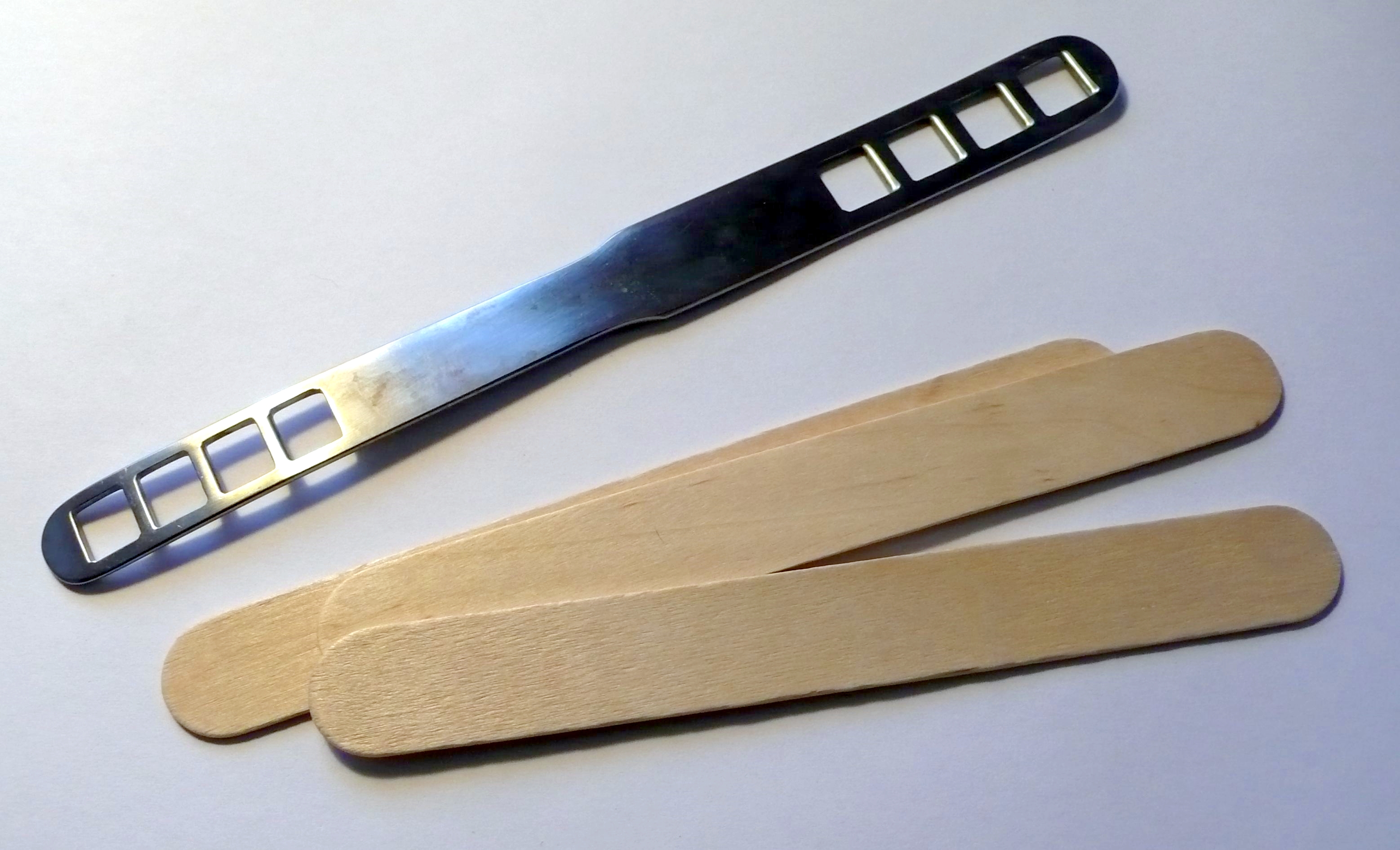|
Nasopharyngeal Airway
In medicine, a nasopharyngeal airway (NPA), nasal trumpet (because of its flared end), or nose hose, is a type of ''airway adjunct'', a tube that is designed to be inserted through the nasal passage down into the posterior pharynx to secure an open airway. It was introduced by in 1958. When a patient becomes unconscious, the muscles in the jaw commonly relax and can allow the tongue to slide back and obstruct the airway. This makes airway management necessary, and an NPA is one of the available tools. The purpose of the flared end is to prevent the device from becoming lost inside the patient's nose. Sizes As with other catheters, NPAs are measured using the French catheter scale, but sizes are usually also quoted in millimeters. Typical sizes include: 6.5 mm/28FR, 7.0 mm/30FR, 7.5 mm/32FR, 8.0 mm/34FR, and 8.5 mm/36FR. Indications and contraindications These devices are used by emergency care professionals such as EMTs and paramedics in situations ... [...More Info...] [...Related Items...] OR: [Wikipedia] [Google] [Baidu] |
Medicine
Medicine is the science and Praxis (process), practice of caring for patients, managing the Medical diagnosis, diagnosis, prognosis, Preventive medicine, prevention, therapy, treatment, Palliative care, palliation of their injury or disease, and Health promotion, promoting their health. Medicine encompasses a variety of health care practices evolved to maintain and restore health by the prevention (medical), prevention and treatment of illness. Contemporary medicine applies biomedical sciences, biomedical research, medical genetics, genetics, and medical technology to diagnosis (medical), diagnose, treat, and prevent injury and disease, typically through pharmaceuticals or surgery, but also through therapies as diverse as psychotherapy, splint (medicine), external splints and traction, medical devices, biologic medical product, biologics, and Radiation (medicine), ionizing radiation, amongst others. Medicine has been practiced since Prehistoric medicine, prehistoric times, and ... [...More Info...] [...Related Items...] OR: [Wikipedia] [Google] [Baidu] |
Nasal Passage
The nasal cavity is a large, air-filled space above and behind the nose in the middle of the face. The nasal septum divides the cavity into two cavities, also known as fossae. Each cavity is the continuation of one of the two nostrils. The nasal cavity is the uppermost part of the respiratory system and provides the nasal passage for inhaled air from the nostrils to the nasopharynx and rest of the respiratory tract. The paranasal sinuses surround and drain into the nasal cavity. Structure The term "nasal cavity" can refer to each of the two cavities of the nose, or to the two sides combined. The lateral wall of each nasal cavity mainly consists of the maxilla. However, there is a deficiency that is compensated for by the perpendicular plate of the palatine bone, the medial pterygoid plate, the labyrinth of ethmoid and the inferior concha. The paranasal sinuses are connected to the nasal cavity through small orifices called ostia. Most of these ostia communicate with the nos ... [...More Info...] [...Related Items...] OR: [Wikipedia] [Google] [Baidu] |
Upper Airway
The respiratory tract is the subdivision of the respiratory system involved with the process of conducting air to the alveoli for the purposes of gas exchange in mammals. The respiratory tract is lined with respiratory epithelium as respiratory mucosa. Air is breathed in through the nose to the nasal cavity, where a layer of nasal mucosa acts as a filter and traps pollutants and other harmful substances found in the air. Next, air moves into the pharynx, a passage that contains the intersection between the oesophagus and the larynx. The opening of the larynx has a special flap of cartilage, the epiglottis, that opens to allow air to pass through but closes to prevent food from moving into the airway. From the larynx, air moves into the trachea and down to the intersection known as the carina that branches to form the right and left primary (main) bronchi. Each of these bronchi branches into a secondary (lobar) bronchus that branches into tertiary (segmental) bronchi, that bran ... [...More Info...] [...Related Items...] OR: [Wikipedia] [Google] [Baidu] |
Airway
The respiratory tract is the subdivision of the respiratory system involved with the process of conducting air to the alveoli for the purposes of gas exchange in mammals. The respiratory tract is lined with respiratory epithelium as respiratory mucosa. Air is breathed in through the nose to the nasal cavity, where a layer of nasal mucosa acts as a filter and traps pollutants and other harmful substances found in the air. Next, air moves into the pharynx, a passage that contains the intersection between the oesophagus and the larynx. The opening of the larynx has a special flap of cartilage, the epiglottis, that opens to allow air to pass through but closes to prevent food from moving into the airway. From the larynx, air moves into the trachea and down to the intersection known as the carina that branches to form the right and left primary (main) bronchi. Each of these bronchi branches into a secondary (lobar) bronchus that branches into tertiary (segmental) bronchi, that ... [...More Info...] [...Related Items...] OR: [Wikipedia] [Google] [Baidu] |
Airway Management
Airway management includes a set of maneuvers and medical procedures performed to prevent and relieve an airway obstruction. This ensures an open pathway for gas exchange between a patient's lungs and the atmosphere. This is accomplished by either clearing a previously obstructed airway; or by preventing airway obstruction in cases such as anaphylaxis, the Obtundation, obtunded patient, or medical sedation. Airway obstruction can be caused by the tongue, foreign objects, the tissues of the airway itself, and bodily fluids such as blood and gastric contents (Pulmonary aspiration, aspiration). Airway management is commonly divided into two categories: Basic airway management, basic and Advanced airway management, advanced. Basic techniques are generally non-invasive and do not require specialized medical equipment or advanced training. Techniques might include head and neck maneuvers to optimize ventilation, abdominal thrusts, and back blows. Advanced techniques require specialized ... [...More Info...] [...Related Items...] OR: [Wikipedia] [Google] [Baidu] |
French Catheter Scale
The French scale, also known as the French gauge or Charrière system, is a widely used measurement system for the size of catheters. It is commonly abbreviated as Fr but may also be abbreviated as Fg, FR or F, and less frequently as CH or Ch (referencing its inventor, Charrière). However, the term ''gauge'', abbreviated ''G'' or ''ga'', typically refers to the Birmingham gauge for hypodermic needles. The French scale measures and is proportional to the outer diameter of a catheter, with 1 French (Fr) defined as millimeter, making the relationship: 1 mm = 3 Fr. Thus, the outer diameter of a catheter in millimeters can be calculated by dividing the French size by 3. For example, a catheter with a French size of 9 would have an outer diameter of approximately 3mm. While the French scale aligns closely with the metric system, it introduces redundancy and the potential for rounding errors. This metrication problem is further complicated in medical contexts where metric and im ... [...More Info...] [...Related Items...] OR: [Wikipedia] [Google] [Baidu] |
Tracheal Intubation
Tracheal intubation, usually simply referred to as intubation, is the placement of a flexible plastic catheter, tube into the vertebrate trachea, trachea (windpipe) to maintain an open airway or to serve as a conduit through which to administer certain drugs. It is frequently performed in critically injured, ill, or anesthetized patients to facilitate Ventilation (physiology), ventilation of the lungs, including mechanical ventilation, and to prevent the possibility of asphyxiation or airway obstruction. The most widely used route is orotracheal, in which an tracheal tube, endotracheal tube is passed through the mouth and larynx, vocal apparatus into the trachea. In a nasotracheal procedure, an endotracheal tube is passed through the nose and vocal apparatus into the trachea. Other methods of intubation involve surgery and include the cricothyrotomy (used almost exclusively in emergency circumstances) and the tracheotomy, used primarily in situations where a prolonged need for air ... [...More Info...] [...Related Items...] OR: [Wikipedia] [Google] [Baidu] |
Scope Of Practice
Scope of practice describes the activities and duties that a healthcare professional is permitted to undertake. The limits on the actions of these practitioners are set by the terms of their professional license and what the law allows. Each jurisdiction can have laws, licensing bodies, and regulations that describe requirements for education and training, and define scope of practice. Governing, licensing, and law enforcement bodies are often at the sub-national (e.g. state or province) level, but national guidelines and regulations also often exist. For example, in the United States, the National Highway Traffic Safety Administration in the Department of Transportation has national scope of practicefor emergency medical services. By country United States In the United States, scope of practice law is determined by the states' legislatures and regulatory boards. According to the National Conference of State Legislatures, non-physician health care providers are providing ... [...More Info...] [...Related Items...] OR: [Wikipedia] [Google] [Baidu] |
Oropharyngeal Airway
An oropharyngeal airway (also known as an oral airway, OPA or Guedel pattern airway) is a medical device called an ''airway adjunct'' used in airway management to maintain or open a patient's airway. It does this by preventing the tongue from covering the epiglottis, which could prevent the person from breathing. When a person becomes unconscious, the muscles in their jaw relax and allow the tongue to obstruct the airway. History and usage The oropharyngeal airway was designed by Arthur Guedel. Oropharyngeal airways come in a variety of sizes, from infant to adult, and are used commonly in pre-hospital emergency care and for short term airway management post anaesthetic or when manual methods are inadequate to maintain an open airway. This piece of equipment is utilized by certified first responders, emergency medical technicians, paramedics, anesthesia providers, and other health professionals when tracheal intubation is either not available, not advisable or the problem ... [...More Info...] [...Related Items...] OR: [Wikipedia] [Google] [Baidu] |
Airway Management
Airway management includes a set of maneuvers and medical procedures performed to prevent and relieve an airway obstruction. This ensures an open pathway for gas exchange between a patient's lungs and the atmosphere. This is accomplished by either clearing a previously obstructed airway; or by preventing airway obstruction in cases such as anaphylaxis, the Obtundation, obtunded patient, or medical sedation. Airway obstruction can be caused by the tongue, foreign objects, the tissues of the airway itself, and bodily fluids such as blood and gastric contents (Pulmonary aspiration, aspiration). Airway management is commonly divided into two categories: Basic airway management, basic and Advanced airway management, advanced. Basic techniques are generally non-invasive and do not require specialized medical equipment or advanced training. Techniques might include head and neck maneuvers to optimize ventilation, abdominal thrusts, and back blows. Advanced techniques require specialized ... [...More Info...] [...Related Items...] OR: [Wikipedia] [Google] [Baidu] |
Medical Equipment
A medical device is any device intended to be used for medical purposes. Significant potential for hazards are inherent when using a device for medical purposes and thus medical devices must be proved safe and effective with reasonable assurance before regulating governments allow marketing of the device in their country. As a general rule, as the associated risk of the device increases the amount of testing required to establish safety and efficacy also increases. Further, as associated risk increases the potential benefit to the patient must also increase. Discovery of what would be considered a medical device by modern standards dates as far back as in Baluchistan where Neolithic dentists used flint-tipped drills and bowstrings. Study of Archaeology, archeology and Roman medical literature also indicate that many types of medical devices were in widespread use during the time of ancient Rome. In the United States it was not until the Federal Food, Drug, and Cosmetic Act ( ... [...More Info...] [...Related Items...] OR: [Wikipedia] [Google] [Baidu] |




